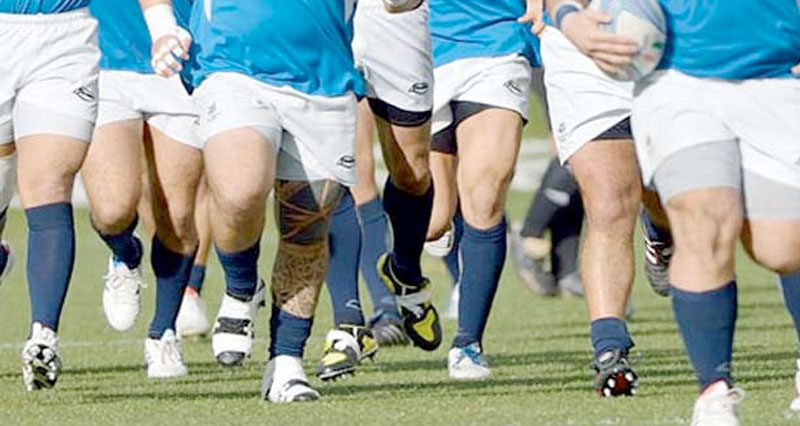A report by the BBC indicated that the size of the average Rugby World Cup player had progressively increased to a significant extent over the course of the last 30 years.
In light of news that the professionals are ever increasing in size, what does this mean for the aspiring player and the shape of future players? Is the biggest rugby player going to be the best, or are there other factors that will influence sporting ability?
Does this indicate a trend for a new ideal ‘rugby player body’ within the sport, meaning a progressive increase in size will be necessary to compete to world standard?
Average weights
The National Institute of Sports and Physical Education in France found that the average weight of a competing 1987 World Cup rugby forward was 104.2kg (approximately 16 stone), and the average back weighed in at 83kg (around 13 stone).
By contrast in the current game, the backs weighed in at a 91.5kg average, marking a 6kg increase in size, and the average forward now weighs in at 111.3kg – an increase of more than 7kg over the past three decades. In simple terms, this means that the weight of the average World Cup rugby player is almost a stone heavier (6.4kg) than they were 30 years ago.
So what does this mean for the future of the professional rugby player physique? Will the modern game demand a continually increasing size and weight of the average player in order to compete successfully?
The rate of increase has slowed
The Institute found that in the period spanning 1987 to 2011, the average weight of World Cup rugby players increased with the advent of each World Cup – however, the rate of this reported increase slowed as time went on. Researchers found that the most significant increase in player size occurred in the period between the 1991 Rugby World Cup and the 1995 Rugby World Cup.
Dr. Grant Trewarthur, a biomechanics expert from Bath University dispels the misconception that future rugby players will need to progressively increase in size to compete on the world stage. “At some point, there has to be an upper limit to the useful size of a rugby player, and from 2002-2013 really there was no (significant) change in terms of player size in height and weight. (There was) perhaps a maximum (increase) of 2kg across that 10-year period, so really nothing significant.”
Weaker teams are catching up
However, contrary to what the broader figures of the report suggest, specific statistics show that recently players in the top tier of international rugby aren’t actually getting much bigger. Whilst broader statistics do indicate that the average size of players participating in the World Cup is still rising, however, this is due largely to the increasing development of teams that were previously not viewed as serious World Cup contenders.
Countries such as Italy, Uruguay, and Japan have been catching up with the more established rugby nations over the past few years, professionalising their training regimes and thus enhancing player physiques to come nearer to the international standard. This means that now their players are catching up physically with more established countries players were 20 years ago, hence the significant impact on the average figures of the report.
Too big to play
Overall, research suggests that we’ve actually now reached a size plateau in professional rugby players. Now that the nations traditionally represented by less-developed players than their high-tier team competitors have increased in size, we can predict an outgoing plateau reflected in future statistics.
Furthermore, if players were to continue to increase in size it would negatively impact their performance. If players were to get much bigger, they would struggle with the increased work rate of the modern game.
This is illustrated by statistics from OPTA Sports, showing that in the 1991 World Cup there was an average of 91 tackles per game, an average which increased tremendously to 197 tackles per game by 2011. In the current game, the ball is often out of play less often too, due to a significant fall in interruptions from line-outs and scrums.
In essence, aspiring pro athletes need not be daunted by the projected reports of demands for increasingly large players. Not only has the projected ideal represented by World Cup players reached a plateau but also there is no biomechanical need for a physical size increase, as this would be counterproductive only serving to impede player performance.
